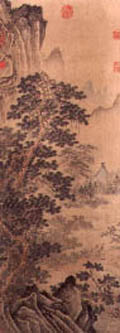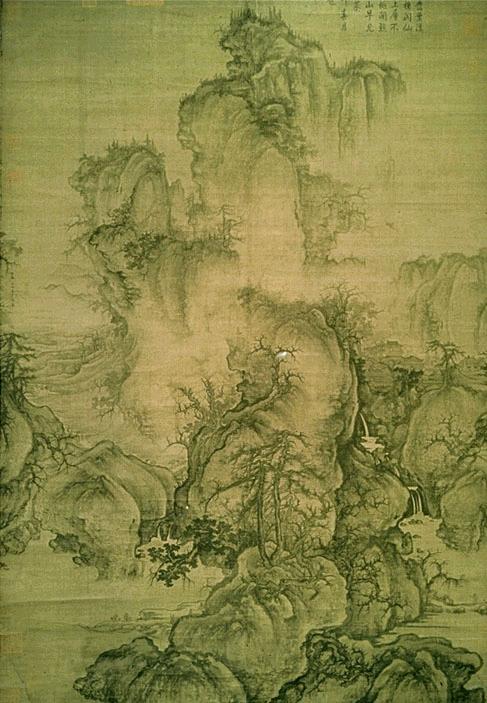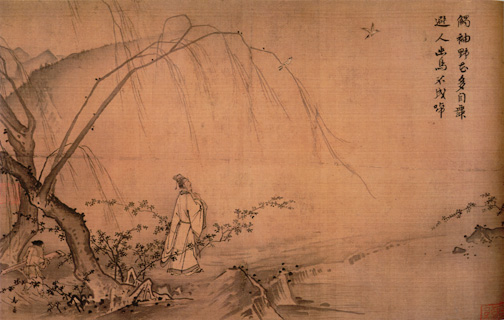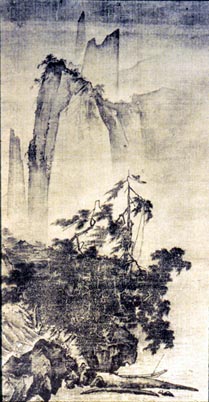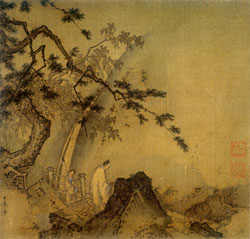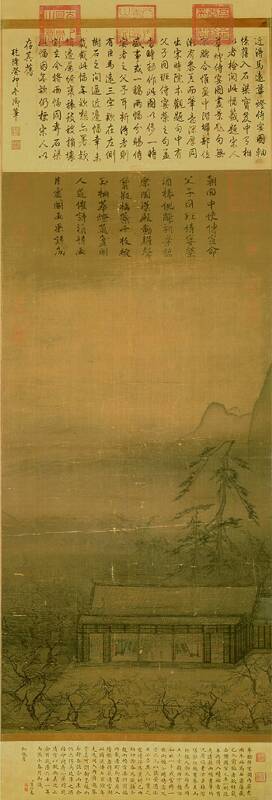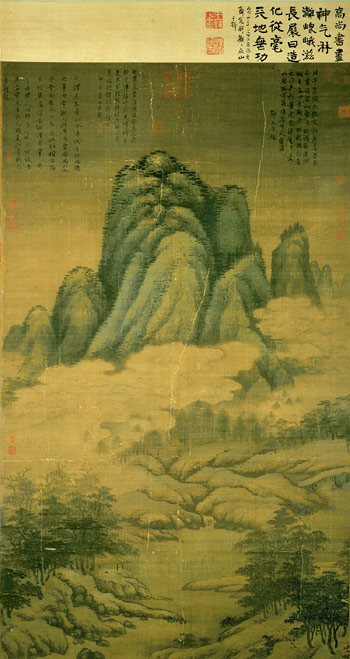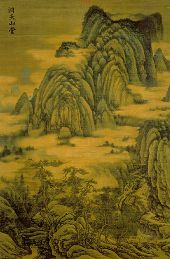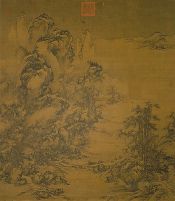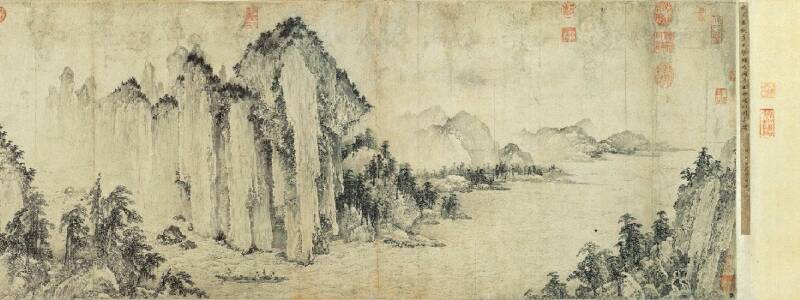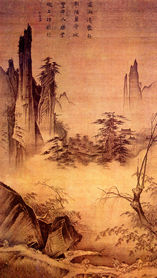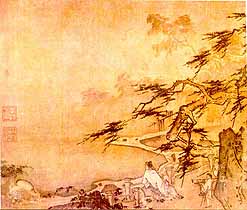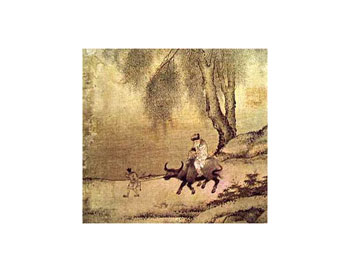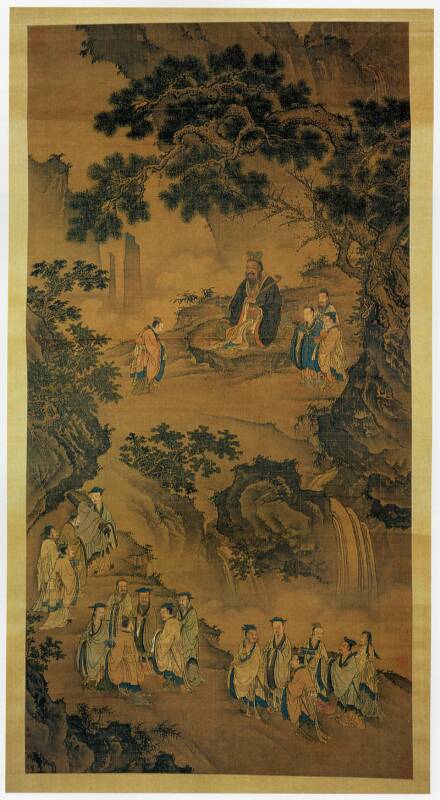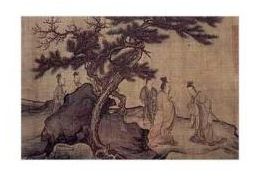 | ||||
Ch'an Art
 | ||||
Pen & Ink Artworks
David Reed Thomas
Ink, Brush, Charcoal, and Pencil
Chan Art
This page was last updated on: October 29, 2020
Ch'an is a Buddhist/Daoist synthesis. As an expression of art, it first became popular during the Southern Sung Dynastry period of China 1127 - 1279 A.D. Later it was manifested as a vital force in Japan, know today as Zen.
Ch'an artists executed different spontaneous applications in landscapes (considered to be the highest form of Chinese classical art) and still life often sparked by intuitive vision. This was a perceptive, suggestive, and asymmetric style at its most developed and sophisticated best during the Southern Sung period. The Ch'an artist sought to express an understanding or mood of both inner harmony and harmony with the natural surroundings in pictorial form. Interesting to note that the human figure, if represented at all, was vastly diminished and did not intrude upon the magnitude of nature.
 | ||||
 | ||||
Ma Yuan - Active 1190-1235
Ch'an Art
1 - Accurate Lines
2 - Powerful Brush Movements
3 - Contrast Gradations of Ink
4 - Interplay Between Dark and Light
5 - Painted and Unpainted Spaces
 | ||||
These are hanging scrolls with Ink and color on rice-paper.
 | ||||
These are hanging scrolls with Ink and color on rice-paper.
Ma Yuan's style reflects the trend in Ch'an landscape painting by depicting and gentler, simpler, more lyrical and intimate mood.
Li Tang - Active 1070 - 1150
 | ||||
 | ||||
Although Chan is a Buddhist term, David and his wife Debbie are strong Christians, and believe in the Lord Jesus Christ, that he died to save us from our sins so that we can have everlasting eternal life. John 3:16
Ma Yuan (active 1190-1224), On a Mountain Path in Spring
 | ||||
 | ||||
 | ||||
 | ||||
 | ||||
 | ||||
 | ||||
 | ||||
 | ||||
 | ||||
 | ||||
 | ||||
 | ||||
 | ||||
The Traditional Chan Art Masters of Ancient China

